
When it comes to Bibles, the King James Bible may be the most popular of all modern versions. Before the King James Bible, there were several versions of different sections of the Bible, but the first complete translation was the John Wycliffe Bible, which was translated into English from Latin in the 14th century. Other Bible translations included the Tyndale Bible, which was translated from the Greek and Hebrew texts. The Coverdale Bible, translated in 1535, was the first complete Bible in modern English. In 1539, the Great Bible was the first Bible sanctioned by the British Crown, according to Christian Apologetics and Research Ministry (CARM).

Other English translations included the Geneva Bible, which was the first English Bible approved by a committee, and it was the first to contain verse numbers. The Bishop’s Bible was the second Bible authorized by England in 1568. The books in these translations were based on the books included in the Latin version of the Bible, called the Vulgate, which is considered to be the first worldwide edition of the Bible.
THE FIRST BIBLE WAS ASSEMBLED IN AROUND A.D. 400

St. Jerome assembled the Vulgate around A.D. 400 according to Learn Religions. It contained 39 books in the Old Testament, which was then known as the Hebrew Bible, and 27 books known as the New Testament. Many books about the life and teaching of Jesus were written in the first century, and many were not authentic. This became a matter of concern for early Christian church leaders. They gathered at the Council of Nicea in A.D. 325 and again in A.D. 381 at the First Council of Constantinople to decide which books would go into the New Testament. They determined that a book would be considered “scripture” if it was written by one of Jesus’ disciples, or someone who was a witness to his ministry. The book also had to be written in the first century, and it had to be consistent with the other parts of the Bible.
The Vulgate was used for more almost 1,500 years (via Aleteia). While what we have come to know as the Holy Bible has undergone a myriad of changes, the most significant change possibly occurred under the rule of King James I.
KING JAMES I AUTHORIZED A NEW TRANSLATION

King James I was concerned about inconsistencies with the different Bible translations circulating in the 17th century, according to Britannica. Several clergymen also asked the king for a revision, claiming that some of the translations floating around were corrupt. The king wanted a version of the Bible that settled “religious differences,” as well as one that reinforced his power, per History.
To do this, he arranged 47 scholars to revise the multitude of existing biblical translations. Divided into six groups, they worked separately on different sections for a whopping seven years. Britannica reports that these men had to follow strict rules to avoid interjecting any bias, and they used a variety of tools to help them create a scholarly Bible that was faithful to its original languages. In 1611, the King James Bible was published, and because of advancements made in printing, it became one of the most accessible Bible versions to date.
THE OLDEST BIBLE IS AN ETHIOPIAN BIBLE

Among the many translations of the Bible, experts believe that the oldest original copy was discovered in Ethiopia, according to Orthodox Christian. According to Aleteia, it is not clear exactly when the Ethiopian Bible was first discovered, but it was mentioned in a book written by historian Beatrice Playne in 1950.
The Ethiopian Bible is often referred to as the Garima Gospels: named for the monk who reportedly wrote the book after he arrived in Ethiopia from Constantinople sometime around A.D. 494. This Bible contains three manuscripts in two volumes, both of which are about 10 inches thick, reports the Independent. The two books are named Garima 1 and Garima 2 and the first tome’s cover is made from copper while Garima 2’s is made from silver (via Africa Global News). The Ethiopian Heritage Fund explains that each volume contains about 400 pages. Written on goatskin in the language of Ge’ez, carbon dating reveals that the manuscript appears to be from sometime between A.D. 330 to 650 AD.
THE ETHIOPIAN BIBLE IS TUCKED AWAY IN A MONASTERY
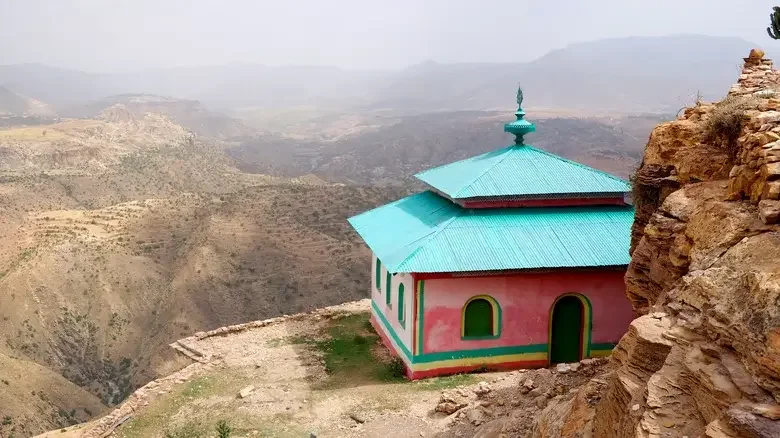
Unlike the Hebrew Bible, the Vulgate, or the King James Bible, there is only one copy of the Ethiopian Bible, and it stays locked away in a monastery that sits on the edge of a mountainside some 7,000 feet high in the Tigrai Highlands (per the Independent). The fact that it is still around is astounding since Ethiopia has endured attacks from Muslims, Italians, and a fire that destroyed the monastery’s church, as Orthodox Christian Laity notes.
In 2010, the Bible was restored by the Ethiopian Heritage Fund, which has worked to restore many other artifacts in Ethiopia. Bookbinder Lester Capon spent three weeks at the monastery working to restore the binding and clean some of the pages. The Independent reports that he had to work outside with only the equipment he could carry with him because the monks would not let the Bible out of their site.
THE ETHIOPIAN BIBLE DIFFERS FROM THE KING JAMES BIBLE IN MANY WAYS
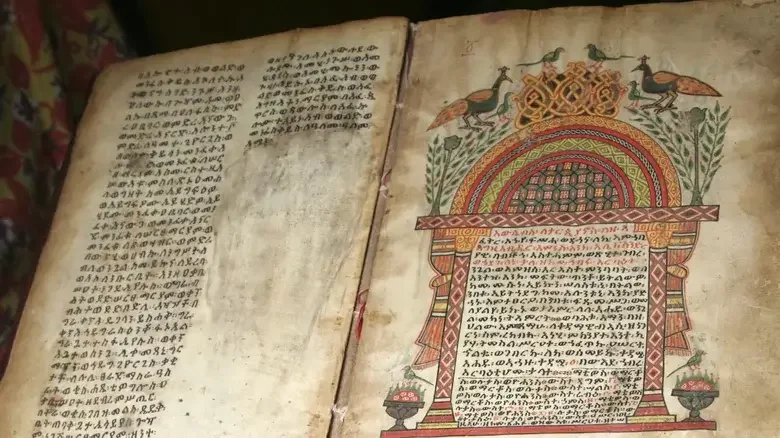 The Ethiopian Bible and the King James Bible are different manuscripts. The Ethiopian Bible has 84 books compared to the 66 in the King James Bible. The Ethiopian Bible only contains four of the Gospels of the New Testament and also contains books that were not included the King James Bible. These include the Book of Enoch, Esdras, Baruch, and the three books of Maccabee, according to Orthodox Christian Laity.The Ethiopian Bible is also vibrantly illustrated. Some of the pages are filled with drawings depicting the saints, apostles, a temple, and even charts that were used to help readers cross-reference certain passages, per the Marginalia. Surprisingly, the colors on the pages are still rich. Experts believe this is due to the fact that the book has been housed in a monastery that rarely saw the light of day where it remains today (via Orthodox Christian Laity).
The Ethiopian Bible and the King James Bible are different manuscripts. The Ethiopian Bible has 84 books compared to the 66 in the King James Bible. The Ethiopian Bible only contains four of the Gospels of the New Testament and also contains books that were not included the King James Bible. These include the Book of Enoch, Esdras, Baruch, and the three books of Maccabee, according to Orthodox Christian Laity.The Ethiopian Bible is also vibrantly illustrated. Some of the pages are filled with drawings depicting the saints, apostles, a temple, and even charts that were used to help readers cross-reference certain passages, per the Marginalia. Surprisingly, the colors on the pages are still rich. Experts believe this is due to the fact that the book has been housed in a monastery that rarely saw the light of day where it remains today (via Orthodox Christian Laity).
BIBLE MYSTERIES THAT REMAIN UNSOLVED
BY KATHY BENJAMIN/MAY 30, 2019 11:24 AM EDT

Considering the Bible is based around some pretty mystical ideas, it’s surprisingly grounded in reality in other ways. It says, for example, exactly how big Noah’s ark was, what the Ark of the Covenant looked like, and has endless lists of who begat whom. Jesus gets four whole books that cover his relatively short ministry, and they include details about locations, family relationships, even clothing. But despite all the specific information, there is still room for plenty of mystery.
Sometimes the Bible just leaves out information that seems important and would be really helpful to scholars. Other times the information is there and made sense to readers at some point, but our understanding has been lost to history. Perhaps most famously, there are objects mentioned in the Bible that disappeared at some point, and people are still looking for them today. But despite all the interest, there are still plenty of biblical mysteries that haven’t been solved.
WHERE IS THE ARK OF THE COVENANT?
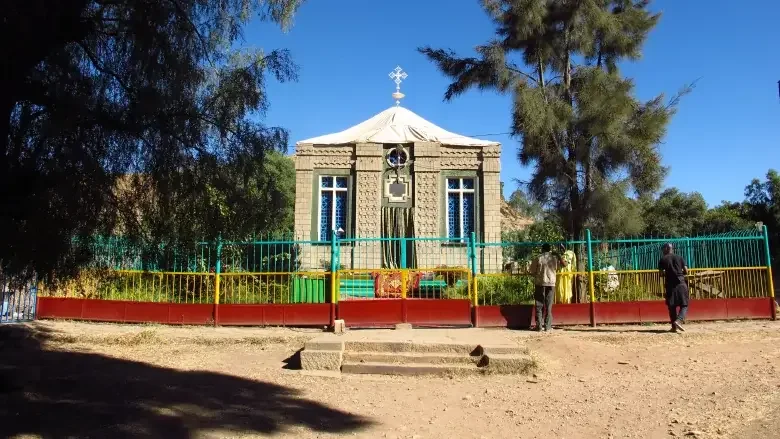
The Ark of the Covenant was an extremely fancy box used to hold the original tablets with the Ten Commandments engraved on them. It was supposed to have incredible powers, and killed anyone who touched it or looked inside (as seen in the documentary Raiders of the Lost Ark). But this unbelievably important and powerful object went missing when the Babylonians sacked Jerusalem in 587 B.C., and no one knows what happened to it.
According to History, one theory is that the Ark was moved safely to Egypt before the sacking. From there, it supposedly made its way to Aksum in Ethiopia. And that’s where it is today. Mystery solved, right? Not exactly. While Smithsonian says a monastery in Aksum does claim to have the Ark (Ethiopians believe the Ark arrived well before the sacking of Jerusalem, brought back in secret by the illegitimate son of King Solomon and the Queen of Sheba) no one gets to see it. Everyone just has to take their word for it. That includes, bizarrely, even the head of the Ethiopian Orthodox Church. The only person allowed to see the Ark is a single, virgin monk. After he is selected for this special position, he enters the Ark’s compound (above) to guard it, then never leaves again. His job is to pray constantly and burn incense. He’s there until he dies, when another guy gets the gig. The rest of the world is apparently never going to get proof one way or the other.
WHERE DID THE LOST TRIBES OF ISRAEL GO?

After Moses died, the Jews divided into a dozen tribes, each led by a different guy. Two of those tribes stuck around, but according to the Encyclopedia Britannica, the other 10 were conquered by the Assyrians in 721 B.C. Logic says the members probably just assimilated with the new group over time, and that’s why they disappear from history as distinct entities. But there are modern people in far-flung places claiming to be direct descendants of some of these Lost Tribes.
Bible Odyssey says Richard Brothers wrote in 1794 that England was the home of the Lost Tribes, and he was their prophet. Despite the fact he was writing this from an insane asylum, a bunch of people got onboard with the idea. PBS says the Japanese as a whole are also supposed to be a Lost Tribe, as well as groups in China, Afghanistan, the Crimea, the Caucasus, Kenya, Zimbabwe (pictured), Nigeria, Armenia, Persia, Central Asia, North Siberia, West Africa, Peru, South America, Australia, and Ireland. The claim of a sect of Ethiopian Jews is taken seriously by Israel, and most of them live there now. Many people have said Native Americans are descended from the Lost Tribes, most famously Joseph Smith, who made it a key part of Mormon history.
The people with the most evidence they may be a Lost Tribe are a group of Jews in India. A genetic study in 2016 found they have some genes unrelated to other Indians, but similar to many Jews.
WHAT YEAR WAS JESUS BORN?
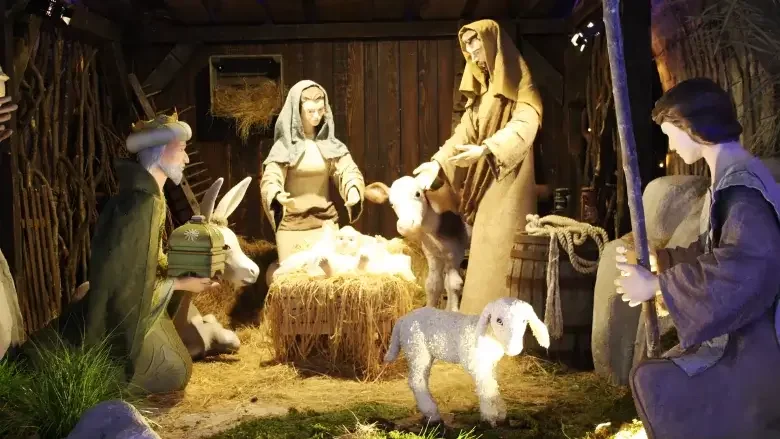
Theoretically, Jesus’ birth year should be simple to pinpoint. Luke is very clear that Mary and Joseph went to Bethlehem because of a Roman census. He also says Herod was king at the time. According to Handbook for the Study of the Historical Jesus, there was a census in Judea in (what we now call) 6 A.D.; the only problem is Herod had been dead for 10 years at that point. Since the two events don’t overlap, which one should be used to pinpoint when Jesus was born? Most Bible scholars pick Herod’s reign and place Jesus’ birth between 7 and 4 B.C.
The other Biblical clue to the time of Jesus’ birth is the apparently extremely noticeable star that showed up. But as Historic Mysteries points out, there is no Greek, Roman, or Babylonian record of any weird astronomical activity during those years. If Jesus’ birth is based on something happening in the sky, there are various other options. 12-11 B.C. is a possibility because of the appearance of Halley’s comet. There was a local census at that time, and the historical record shows the comet was seen in the right area. Live Science reports there was another visible comet that was very slow moving 5 B.C. that was noted by Chinese observers. Or the star might not have been a comet at all. One astronomer argued the “star” was a conjunction of Venus and Jupiter in 2 B.C., while others say it was one between Saturn and Jupiter in 7 B.C.
WHAT DID JESUS DO DURING HIS “LOST YEARS”?

The time between Jesus’ birth and when he starts preaching around age 30 is virtually ignored in the four gospels. Obviously, lots of people throughout history wanted to know what Jesus did in those “lost years.” There is absolutely zero evidence, but that didn’t stop some individuals from coming up with outlandish theories.
SBS found despite coming from a working-class family in the Middle East, Jesus sure seemed to like to travel, allegedly going everywhere. One archaeologist wrote a book promoting the theory that young Jesus made it all the way to the Western Hemisphere, visiting tribes in “Peru, South and Central America, Mexico and North America.” Another legend has it that at 21, Jesus came to Japan to study with a Buddhist master.
But there are two big theories out there. The first was put forward by Nicolas Notovitch, a Russian who visited a Buddhist monastery in the Himalayas and claimed he saw proof Jesus traveled to India, Nepal, and Tibet to study with yogis. Notovitch wrote a book about it in 1894, and people freaked out. But others have claimed they verified it since then.
English poet William Blake wrote “Jerusalem” in the 1800s, and it was turned into a popular hymn. It recounted the legend that Jesus came to England with his uncle during his lost years. But not everyone thinks it’s a fairy tale. The BBC reports in 2009 an academic wrote a book saying it was “plausible” and Jesus had “plenty of time” to make the journey.
WHERE IS THE HOLY GRAIL?
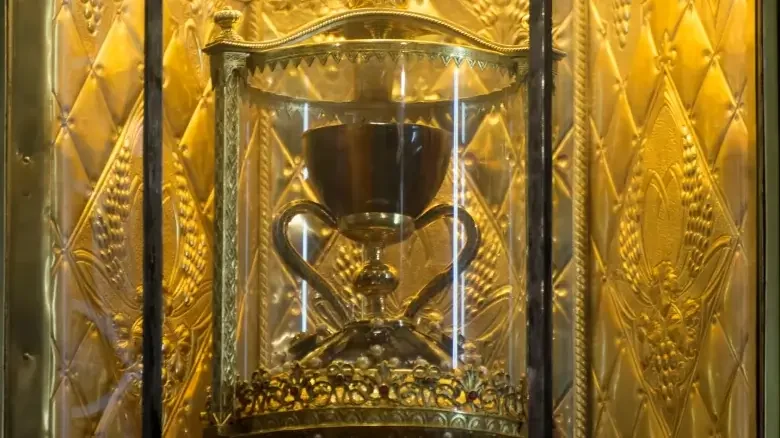 Even though it doesn’t make much sense anyone would think it was important to grab and save a cup used by a random itinerant preacher at a random Passover meal, people have always been obsessed with the Holy Grail. It became a common theme in medieval literature, and legend had it the Grail was buried in England by Jesus’ uncle or taken from the Holy Land by the Knights Templar. The stories hardly stop there, however; the BBC reports more than 200 places in Europe alone claim they are in possession of the one true Grail. (If you’re outside Europe, don’t worry, you might have it, too. Other claimants can be found in Nova Scotia and Maryland, for example.) A cup in Valencia, Spain, (pictured) is usually the one given most legitimacy and got more clout when two recent popes used it in religious ceremonies.
Even though it doesn’t make much sense anyone would think it was important to grab and save a cup used by a random itinerant preacher at a random Passover meal, people have always been obsessed with the Holy Grail. It became a common theme in medieval literature, and legend had it the Grail was buried in England by Jesus’ uncle or taken from the Holy Land by the Knights Templar. The stories hardly stop there, however; the BBC reports more than 200 places in Europe alone claim they are in possession of the one true Grail. (If you’re outside Europe, don’t worry, you might have it, too. Other claimants can be found in Nova Scotia and Maryland, for example.) A cup in Valencia, Spain, (pictured) is usually the one given most legitimacy and got more clout when two recent popes used it in religious ceremonies.
But this is an argument that is still very much ongoing. As recently as 2014, a new cup was declared to maybe, possibly be the Holy Grail. According to History, two historians argued a different cup in León, Spain, fit the bill. Scientific dating showed it was the right age, and it resembled the description of the Grail included in medieval Egyptian parchments. It was allegedly given to the king of Spain and held in the Basilica of San Isidoro from the 11th century. Since the 1950s, it had been sitting in the basement. So, is this one the real Grail? We will probably never know for sure.
WHAT DAY DID JESUS DIE?

Everyone knows Jesus died on Good Friday; the problem is the Gospels don’t even agree on what day that is. According to Christianity.com, this was because the authors were more concerned with symbolism than accuracy. That’s why, as the book Jesus, Interrupted points out, in three of the gospels, Jesus dies on Passover, but then John goes rogue and says he died the day before Passover. Scholars don’t even agree if he died on a Wednesday, Thursday, or Friday.
Some geologists aren’t letting the Biblical disagreement worry them, and say they have the exact day down. NBC News reported in 2012 that the researchers based their idea on Matthew’s description of Jesus’ death, which brings on an earthquake: “The earth shook, the rocks split, and the tombs broke open.” So they analyzed the seismic activity in the area at the time. They found there was an earthquake sometimes between 26 and 36 A.D. This overlaps with the years Pontius Pilate was procurator of Judea, so it fits with what the Bible says. Once they added in the rest of the Biblical clues, the geologists found a few dates that work, and settled on Friday, April 3, 33 A.D. as the most likely, although it’s impossible to know for sure. Three of the gospels also mention it going dark in the afternoon during the crucifixion, so the researchers also planned on looking into dust storms related to the seismic activity to pinpoint it further, although it’s not clear what they found on that one.
WHAT HAPPENED TO THE LOST BOOKS OF THE BIBLE?

The Bible wasn’t codified until about 400 A.D. Before that, there were lots of books considered holy or important by both Jews and Christians, and some of them didn’t make the final cut. We have plenty of these books today, but others never got a chance because they are completely lost to history. The only reason we know about them is because books that did make it into the Bible mention these works.
According to Reluctant Skeptic, there are 22 of these lost books (although Bible Review says some may be the same thing under different names, so there could be as few as half a dozen). Over and over again in the Old Testament, an author will casually be like, “and of course you can find this information in X book,” only we don’t have X anymore. From what the Bible tells us, these lost books include the histories of various kings and prophets, genealogies, and songs (similar to Psalms). The Book of the Wars of the Lord, as explained by the Jewish Virtual Library, sounds especially fun: an epic poem all about how God destroyed the various enemies of Israel.
But there may be an even more important lost book not included on the list. Ancient Pages reports many scholars think two of the gospels were written based on information from a previous work, known as the Q source. While it’s an extremely controversial theory, proof of Q would be one of the most important discoveries ever.
HOW IS GOD’S NAME PRONOUNCED?
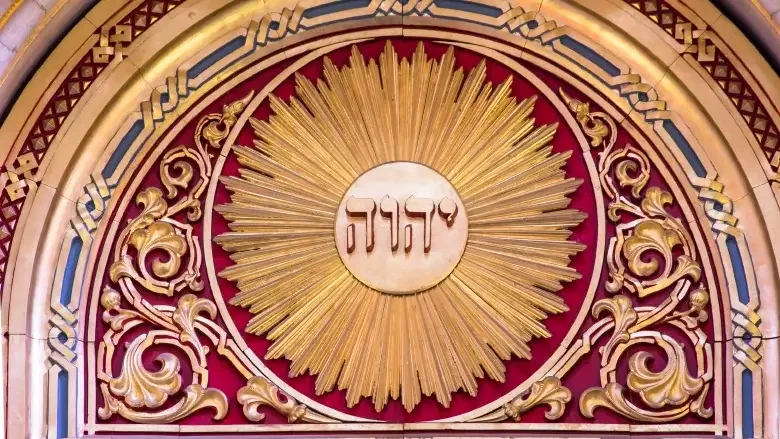
Judaism has strict rules about the personal name of God. According to the Jewish Virtual Library, while there isn’t a rule about writing God’s name down, there is a prohibition against erasing or defacing it in any way. To make sure this couldn’t happen, his name just wasn’t written down. A rule also developed that Jews couldn’t say God’s name outside the Temple. Then the Temple was destroyed, so that effectively meant no one could say it, ever. Since it couldn’t be written down either, this was a problem. Scholars passed down the correct pronunciation for a while, but eventually, everyone forgot how to say their god’s name.
The Encyclopedia Britannica says when God revealed his personal name to Moses, it was written down as YHWH. This is called the tetragrammaton. But because of how Hebrew works, that doesn’t tell us how to pronounce the name correctly. Early Christian writers used something similar to Yahweh. Then Latin-speaking scholars came along and had another problem because “y” doesn’t exist in Latin. They replaced it with an “i” (also used for “j,” which Latin also doesn’t have), and people started pronouncing the tetragrammaton as Jehovah, which was definitely wrong. It wasn’t until the 1800s that scholars switched back to Yahweh, but again, that’s probably not right, although it might be closer.
So according to Jewish tradition, their god (who is also the god of Christians and Muslims) has a personal name that he totally told humans once, and no one knows it.
WHO WAS THE PHARAOH IN EXODUS?

The pharaoh in the Book of Exodus is a real jerk. Moses nicely asks him to let his people (the Jews) leave Egypt, and the guy refuses and punishes the Jewish slaves. So Moses brings down the wrath of God, there are a bunch of horrible plagues, and eventually the pharaoh gives in. But even then, he changes his mind and tries to make the Jews come back, so Moses has to part the Red Sea and the Jews finally escape. But the Bible fails to mention the name of said pharaoh. Since there are no Egyptian records of this event (which, according to National Geographic, doesn’t automatically mean it didn’t happen, since pharaohs were not in the habit of recording their losses) historians and religious scholars don’t know who it was.
There are theories, of course. The name that usually come up, especially in movies about Exodus, is Ramses II. This is based on very scant clues in the Bible about the Israelites building cities for the pharaoh. Ramses had some building projects that would fit the bill. Plus, the first mention of “Israel” as a place shows up during the reign of Ramses’ son. That means the Jews must have left by then, possibly quite recently.
But not everyone agrees on Ramses II. In the Jerusalem Post, one scholar uses various bits of evidence from the Bible to place the Exodus around 1330 B.C., smack in the middle of King Tutankhamun’s reign. So the debate rages on.
WHAT DOES SELAH MEAN?

The Hebrew word “Selah” is all over the Old Testament. According to Ancient Pages, it’s used almost 80 times, which means it’s three times as common as “hallelujah” and twice as common as “amen.” But while those words, also from Hebrew originally, are now used and understood around the world, no one says Selah. The writers of the New Testament didn’t use it either, and that’s because by the time they were writing, the meaning of the word was long forgotten. Even when people started translating the Old Testament from Hebrew to Greek way back in 270 B.C., they had to speculate on its meaning.
No one has figured it out since, either. As Christianity.com puts it, the true meaning of Selah is a mystery. There are plenty of theories. Since the word is used in Psalms so much, and since the Psalms were originally meant to be sung, scholars think it might be some kind of musical notation. Possible translations include “silence,” “pause,” “end,” “a louder strain,” “piano” (meaning soft, not the instrument), “intermission,” or “a pause in the voices singing, while the instruments perform alone.” A lot of those are a similar idea, but some modern versions of the Bible don’t even bother trying to translate, just keeping “Selah” and assuming the reader will figure it out.
Good luck, because at least one music expert doesn’t think the word is a notation but part of the lyrics, possibly meant to be closer to “amen” than any musical instruction.
WHERE IS OPHIR?

Ophir is often referred to as the Biblical El Dorado. According to New Advent, the Old Testament can’t get enough of mentioning this amazing place. It comes up in Genesis, Job, Isaiah, 1 Kings, 2 Chronicles, and the Psalms. Sailors would go on three-year missions to bring back everything from gold, silver, and precious stones, to ivory and fancy woods, to apes and peacocks. These shipments were supposedly a large part of the reason King Solomon got so rich. Obviously, it would be great to know where this luxurious location was, but Ancient Pages says scholars have been wondering for 2,000 years.
Ancient Greek translators of the Old Testament placed Ophir somewhere in India, Sri Lanka, or the Malay Peninsula. Others have proposed various parts of the Arabian Peninsula. The Jewish historian Eupolemus placed it on an island in the Red Sea. But there’s also evidence it might be in Africa somewhere, even though Africa is sadly lacking in peacocks. In 1871, a German geologist visited what is now Zimbabwe and announced he’d found ruins that were definitely Ophir, and his claim was supported by some other scholars at the time. The Roman mathematician Ptolemy and the Arab traveler Ibn Batuta both wrote about a place just as rich as Ophir in present-day Mozambique, while the Ancient Egyptians recorded information on the extremely wealthy land of Punt, most likely in modern Somalia. If both places were real, Punt and Ophir might be the same and might be in East Africa, but who knows?
Sourc- grunge.com
- A copy of the Ethiopian Bible is only accessiable at local Ethiopian Orthodox Tewahedo Church branches


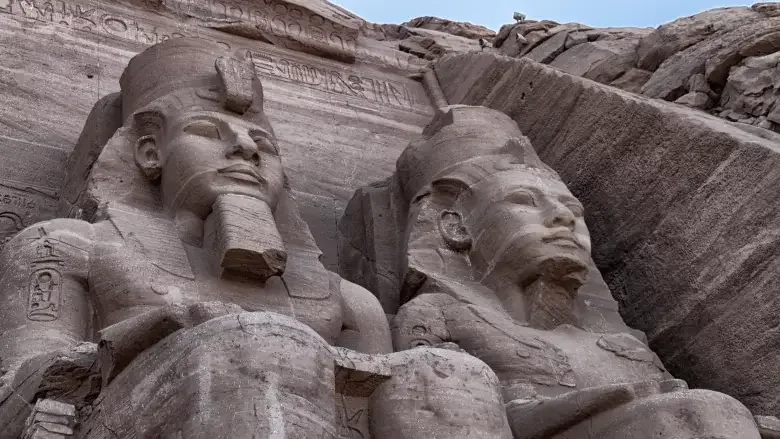
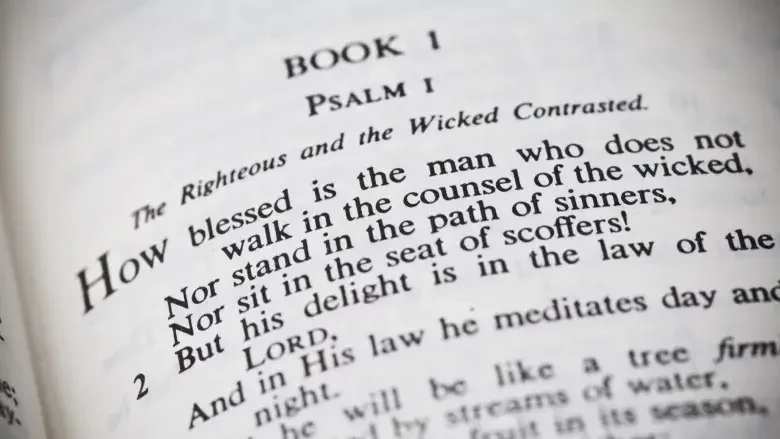

To obtain a copy of the Ethiopian Bible, also known as the Ethiopian Orthodox Tewahedo Church canon, which consists of 88 books, you have several options:
1. Online Sources: There are various online platforms where you can find digital copies of the Ethiopian Bible, including PDF formats. You can perform a search on popular online bookstores, religious websites, or even search engines to find websites or platforms that offer downloadable or purchasable copies of the Ethiopian Bible.
2. Specialized Bookstores: Some specialized bookstores focused on religious texts may carry copies of the Ethiopian Bible. These bookstores often cater to specific religious denominations and may have sections dedicated to rare or unique religious texts. It would be worth checking with these stores, either in person or online, to see if they have copies of the Ethiopian Bible available.
3. Ethiopian Orthodox Tewahedo Church: You can reach out to the Ethiopian Orthodox Tewahedo Church directly. They may have resources available that can help you obtain a copy of the Ethiopian Bible. You can try contacting local Ethiopian Orthodox Tewahedo Church branches or reach out to the main headquarters of the church for guidance and assistance.
4. Religious Communities: Engaging with religious communities or forums that focus on the Ethiopian Orthodox Tewahedo Church and its teachings could provide valuable insights and assistance in obtaining a copy of the Ethiopian Bible. Online religious forums or communities focused on Ethiopian Orthodox Christianity may have members who can guide you towards sources or provide you with the information you need.
5. Translation Services: If you specifically want an English edition of the Ethiopian Bible, you can look for translations of the text. Some translators have worked on translating the Ethiopian Bible into English, allowing wider accessibility to non-Amharic speakers. Online bookstores or specialized religious book publishers may have published translated versions that you can purchase.
Remember, the Ethiopian Bible is a significant religious text, and its availability may vary depending on your location and the resources you have access to. It’s advisable to conduct thorough research and explore multiple avenues to increase your chances of obtaining a copy of the Ethiopian Bible that suits your specific requirements.
I am a sinner and want to come Back to my lord and savior.
I long for leysus touch to make me whole again for I am lost.
Efforts are being made to find a true English translation of the Ethiopian Bible. Some individuals believe that cults deliberately composed 66 books in order to mock God, as the number 6 is seen as symbolic of demonic influences. Nevertheless, there are individuals who are currently working on translating a specific book of the Ethiopian Bible into English. To ensure accuracy, they intend to use multiple translators and cross-reference their translations. In cases where the translators provide conflicting interpretations, they plan to include both versions and allow readers to interpret the text according to their own understanding of the word of God. These individuals recognize the urgency of the times we live in and believe that preserving and spreading the word of God is crucial. Therefore, they encourage readers to save the translation, create backups, print it if possible, and share it with as many people as they can. Additionally, they intend to distribute the translation in PDF format to those who have provided their email addresses in the comments section.
So the process for validating this bible is the same as what they did in 400AD and King James. Multiple translations and cross reference to see how it looks like? What a waste of time. At the end the same conclusion, Jesus is the Truth, the Way, the Life.
I would like to receive a PDF copy when it is ready. I currently keep the Sabbath Holy as best I can adn after listening to a utube vedio on the macabees it mentioned a lot about the biblical calendar and keepint the Sabbath according to the original intent of the Lord God Almighty. I truely want to do according to God’s will and i am hoping obtaining a copy of the Ethiopian Bible will help along with the influence of the Holy Spirit have new light revealed to me by the will of the Almighty.
If it please the author I wish for an English translation of the holy text.
I will in the mean time seek out and etiopian church to see if I can obtain a copy. Thank you for this article.
I’m crying as I write this.
The Ethiopian Bible has been claimed by some to be from the original attendants of the slaves led out of Egypt by Moses. However, it is important to note that the origins and history of the Ethiopian Bible are complex and debated among scholars. The Ethiopian Orthodox Church considers the Ethiopian Bible to be an ancient text that has been preserved throughout centuries. They believe that their scriptures have been passed down through generations, starting with the Queen of Sheba’s visit to King Solomon in biblical times.
It is worth mentioning that the Ethiopian Bible, also known as the Ethiopian Orthodox Tewahedo Church Canon, includes several books that are not found in the typical Western canon. These additional books, such as the Book of Enoch and the Book of Jubilees, have been embraced by the Ethiopian Church as part of their sacred scriptures.
While some proponents argue that the Ethiopian Bible may originate from the same traditions as the attendants of the slaves led by Moses, concrete evidence supporting this claim is scarce. The origins and historical connections of the Ethiopian Bible are still subjects of ongoing research and discussion among scholars.
In conclusion, although the Ethiopian Bible is considered ancient and holds significant religious importance within the Ethiopian Orthodox Church, its direct connection to the original attendants of the slaves led out of Egypt by Moses remains uncertain.
I am so frustrated. I want to so much do according of the will of my Father and His Son my Savior. I am surrounded by Christians that insist that the Sabbath has been done away with and replaced by Sunday. logic tells me that is a misguided understanding. As I am alone in my beliefs I am at a standstill for progression. I believe I need to fast and pray but am in a hostile environment in doing so. Way to many distractions. I believe we are to be honoring the Sabbath but have very little training in doing so. I have come to believe that the Sabbath hours are from 6am to 6pm. i came to this conclusion from matt 20 when it is clear when the work day starts sand ends. Gen 1:14 The Sun, Moon and Stars for telling time. Hopefully you can provide so help in this matter. TY for your time and consideration.
The Sabbath remains the Sabbath no matter what man says. It was changed to Sunday observance by the Roman Catholic church during the time of Constatine. It was done for 2 reasons (that I can find based on research)… a power flex by the Catholic Church/Pope and to align with the pagans as they held Sun-day as their holy day. It was believed that the Roman Catholic church would draw in more converts by observing on the day that was already set aside by the pagans. Also, simply as a show of power as the RMC at the time wasn’t just a religious organization, but a governmental/civil power. It is quoted basically that they did it simply because they could.
THE SABBATH DAY IS SATURDAY PERIOD!
If it please the author I wish for an English translation of the holy text.
I will in the mean time seek out and etiopian church to see if I can obtain a copy. Thank you for this article.
I’m crying as I write this.
I would very mich like to receive a copy of the Ethiopian “Bible”, please. I am on doing research on the differences between the later versions of the text and the original. I feel its very important and that the truth be made available to everyone whenever POSSIBLE and its my belief that much more info is needed than the king james bible to achieve rhe discovery of the truth. I feel many people use the bible referentially when this is so obviously not appropriate, as the book has been reorganized and has had edits and deletions of so much of the original “story”. I appreciate your assistance with this endeavor and your kindness.
I believe the Ethiopia bible is the true book because the pagan church the roman catholic has distorted the written word history, and the calendars yah calendar 13 months and the roman catholic gives us 12 months. Yah name has been change as well as all the names of the old testament. They took out those other books we have 66 books but ethiopia has 88. Everything we have been taught is a lie.